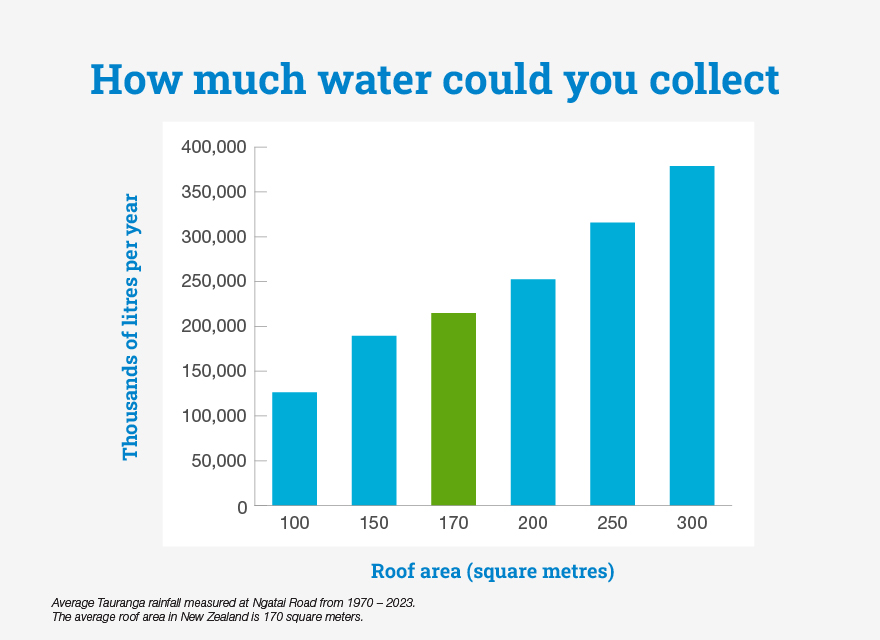Rainwater tanks come in plenty of shapes and sizes to match your needs. The type of rainwater tank suitable for you will depend on what you intend to use the water for, how much water your household needs, where the tank will be situated and how much space is available.
Types of water tanks
Rainwater tanks come in a range of sizes and are constructed from a range of materials, such as plastic or concrete.
If you are already connected to the centralised water network and are short of space, slim-line tanks that act as a fence or small rain barrels that can sit on a deck can be a good option for your property.
Bladder tanks are designed to fit under floors and decks and make good use of previously unused space.
Common tank types
| Type |
Typical Use |
Typical Size |
|

Rain Barrel
|
Easy to set up, generally small and used for outdoor watering only |
Storage ranges from 100 - 1000 litres |
|

Slimline tank
|
Good for area with restricted space. Can be tall due to smaller base. Suitable for indoor and outdoor water use |
Storage ranges from 1000 - 5000 litres |
|

Standard tank
|
Most commonly round and installed above ground. Suitable for indoor and outdoor water uses |
Storage ranges from 1000 - 7500 litres |
|

Large tank
|
Used on commercial sites and rural households that are not connected to mains water. Suitable for complete water supply. |
Storage ranges from 15,000 - 30,000 litres |
|

Underground tank
|
Good for space-restricted sites including commercial sites. Earthworks will be required to bury the tank. |
Storage up to 20,000 litres |
Tank costs
In Aotearoa, rainwater tank costs vary, and it is good to shop around. Costs depend on a variety of things including size, design and the material from which it’s constructed. It’s important to note you may also incur additional costs in the preparation of your site, installation, additional tank parts and fittings, plumbing and electrical services, and consent fees.
Choosing a tank size
To calculate the size of tank you’ll need to consider:
- the annual rainfall in your area (the average Tauranga rainfall is approximately 1200mm per annum)
- your roof’s capture area
- what you intend to use the water for (is it for indoor or outdoor use, or both?)
- how much space you have available for the tank.

Other factors that might influence the size of your tank include:
- the size of your property – a large garden will need more water
- the number of people in your household
- how reliant you are on the water supply
- the efficiency of your water-using appliances and plumbing fittings.
You don’t need to have a huge tank to make a difference – even a rain barrel will reduce your outdoor water use, save you money and provide water in an emergency.
Outdoor use
When it comes to outdoor tasks such as watering the garden or washing your car, you can either install a rain barrel or a rainwater tank. During times of low rainfall, smaller tanks may run dry so before installing your rainwater tank, make sure it’s a size that can service your watering habits and possible climatic conditions.
Indoor use
If you are planning to use your rainwater for indoor supply, you will need to install a larger tank.
If rainwater is your sole source of water, you will need at least a 30,000-litre rainwater tank. Talk to your local suppliers to find out what tank size will best suit your local climate and household.